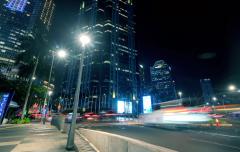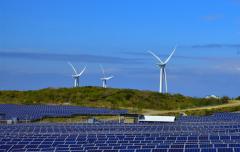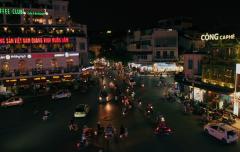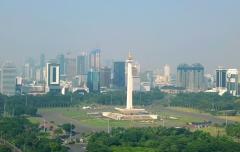Indonesia Low Emission Network is launched as part of SHIFT project
The launch of the Indonesia Low Emission Network (Jejaring Indonesia Rendah Emisi or JIRE) on February 19, 2019 is part of an ambitious national plan to reduce the country’s greenhouse gas emissions by at least 29% by 2030.
The network is being coordinated by the Green Partner Foundation (Yayasan Mitra Hijau or YMH), which is supported by the SHIFT SEA project. The SHIFT SEA Project is led by a consortium of international energy and climate experts, including Sustainable Energy for All (SEforALL), Climate Action Network International, Mission 2020, and Third Generation Environmentalism.
JIRE is part of YMH’s efforts to promote the shift of financial flows away from high emission fuels into low emission in order to contribute to meeting the national emission reduction target.
Renewable energy sources in Indonesia are abundant but largely untapped. Solar PV units, for example, have an estimated potential of generating 208 GW in the country, according to Indonesia's Ministry of Energy and Mineral Resources, but only 16 MW has been installed.
Strong regulatory incentives would help unleash a shift in finance to renewable energy, which would accelerate Indonesia's clean energy transition while providing universal energy access.
The main objectives of JIRE include strengthening partnerships between state and non-state actors, help the national and local governments to develop and review low carbon development related policies, promote knowledge about low emission technologies and best practices, improve access to low carbon financial resources, and increase private sector involvement in implementing low carbon development policies. More than 60 organizations and individuals have expressed their commitment to join JIRE, including companies, NGOs and researchers.
“The network that we have developed together with Indonesia non-state actors, demonstrates that low emission development is not only a government program,” said Dicky Edwin Hindarto, representing YMH and co-founder of JIRE. “Only with a win-win collaboration between state and non-state actors can we achieve our national emission reduction target together.”
Hindarto cites a 2 MW solar power generation project for the 2018 Asian Games XVIII at the Jakabaring Sports City in Palembang, South Sumatra as a model for what JIRE wants to achieve.
“This solar power generation project serves as a good example for Indonesia’s business community and local governments on how financial and technical risks can be reduced,” said Hindarto. “We want the Indonesia private sector to understand that we can develop good renewable energy projects in Indonesia.”
Last year, the Indonesian government introduced a new tariff regime for renewable energy. It gives the PLN, the state power company, greater control over tariffs in the sector by assessing renewable energy supplies from independent power producers based on regional electricity production cost benchmarks. The price paid by PLN should not exceed the existing average cost of generation on the local grid.
This places renewable energy producers at a potential disadvantage since their prices will need to be competitive against non-renewable energy sources, such as coal and LNG, which may have lower costs of production. PLN said it needed to establish such a benchmark for renewable energy to justify its government subsidies. “The result is that the private sector and local governments have a limited opportunity to implement renewable energy that can be connected to the grid,” said Hindarto.
The Jakabaring Stadium solar power project shows how cost obstacles can be overcome by attracting outside investment. In this case, the Japanese government provided financial subsidies to PDPDE, a local government mining and energy company to build and operate the solar power system. “Other projects can draw on different investors, such as the Green Climate Fund, which have not been utilized yet,” Hindarto said.
The electricity produced by the solar project, the largest in South Sumatra, is sold to PLN under a power purchase agreement for use on the regional grid in an effort to reduce greenhouse gas emissions from fossil-fueled power plants. The expected operational life of the project is 17 years.
“The construction of Jakabaring Solar PV power plant is in line with the PLN program to be environmentally friendly and contributes to realizing the target of 23% renewable energy by 2025,” PLN said in a statement supporting the solar project. “The existence of the Jakabaring Solar PV Plant contributes to securing the electricity supply for the area and prevent blackouts as electricity demand is expected to increase with development activities, including a Light Rail Transit [project].”
The Ministry of Environment of Japan helped finance the project through its Joint Crediting Mechanism program, which promotes the transfer of low carbon technologies from Japan. The solar panels and other technical assistance were provided by Japan’s Sharp Energy Solutions.
Under the JCM program, the solar power plant is monitored throughout its operation to ensure it meets greenhouse gas emission reduction targets. “JCM is the first market-based mechanism scheme in the world that uses sustainable development criteria in reviewing and evaluating systems. This ensures that sustainable development criteria must be achieved by the project participant,” said Hindarto.
Expectations that the Jakabaring Stadium will achieve financial sustainability has persuaded PDPDE to begin planning a 10 MW power generation project on nearby Bangka Island for construction in 2020.




